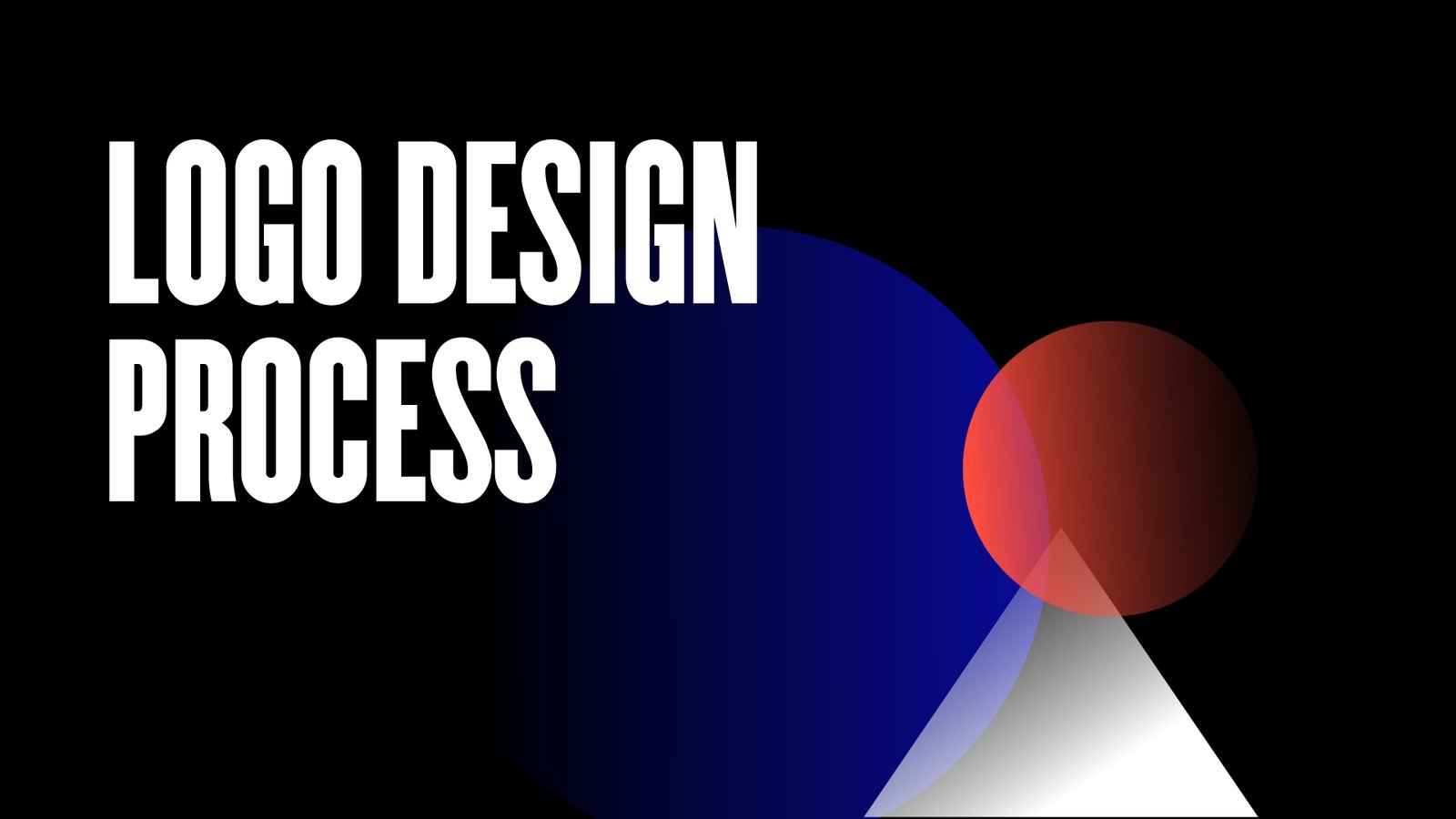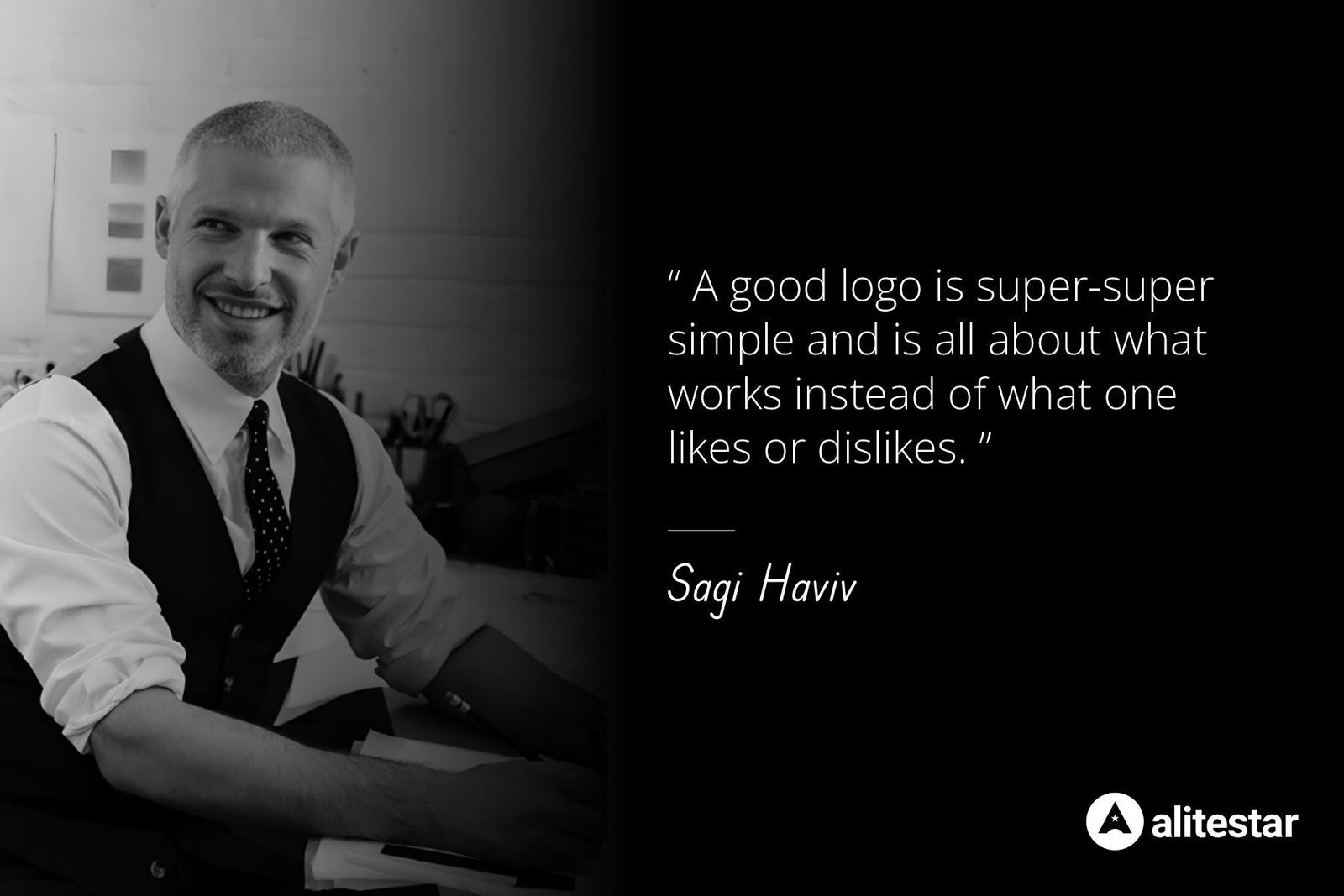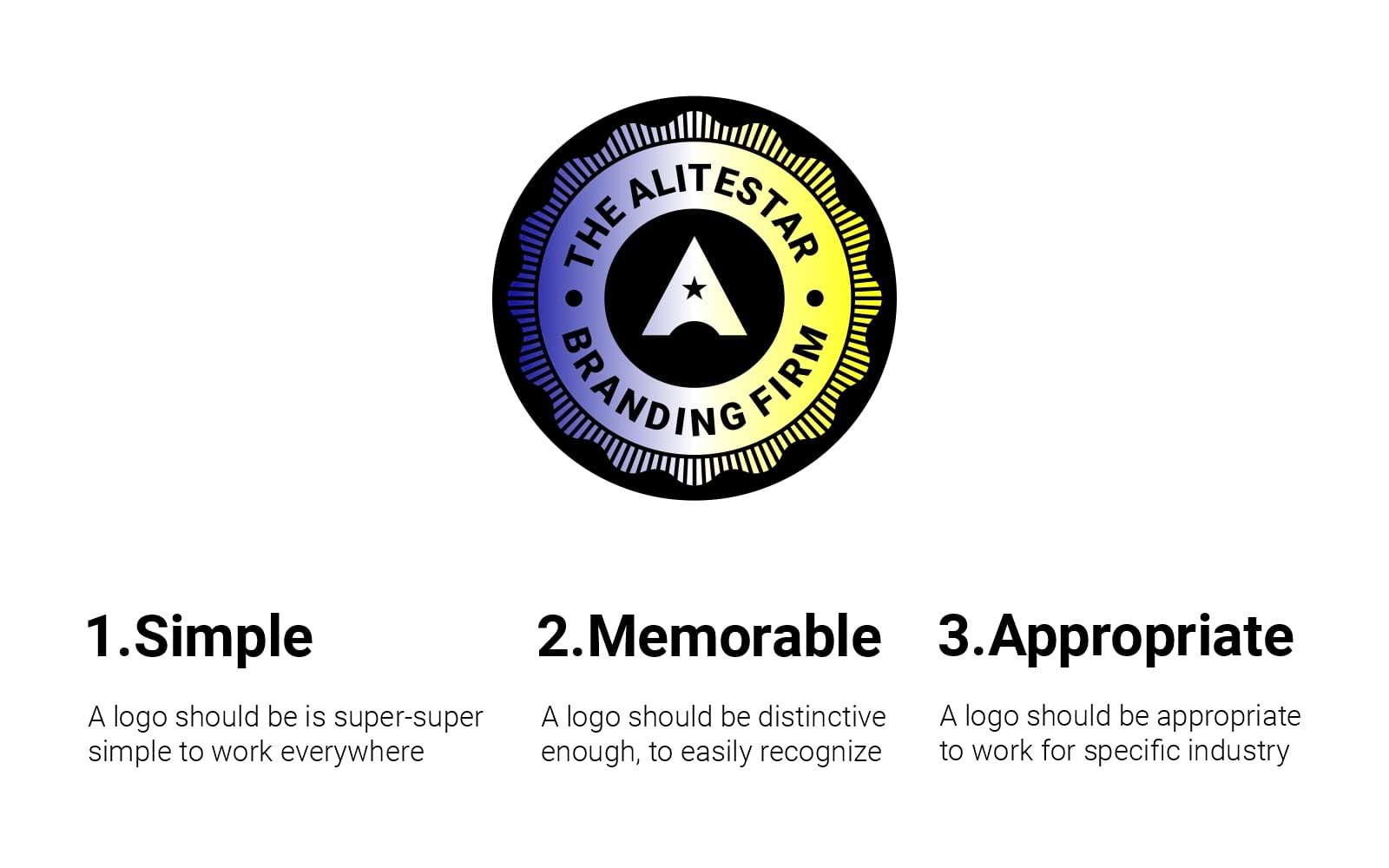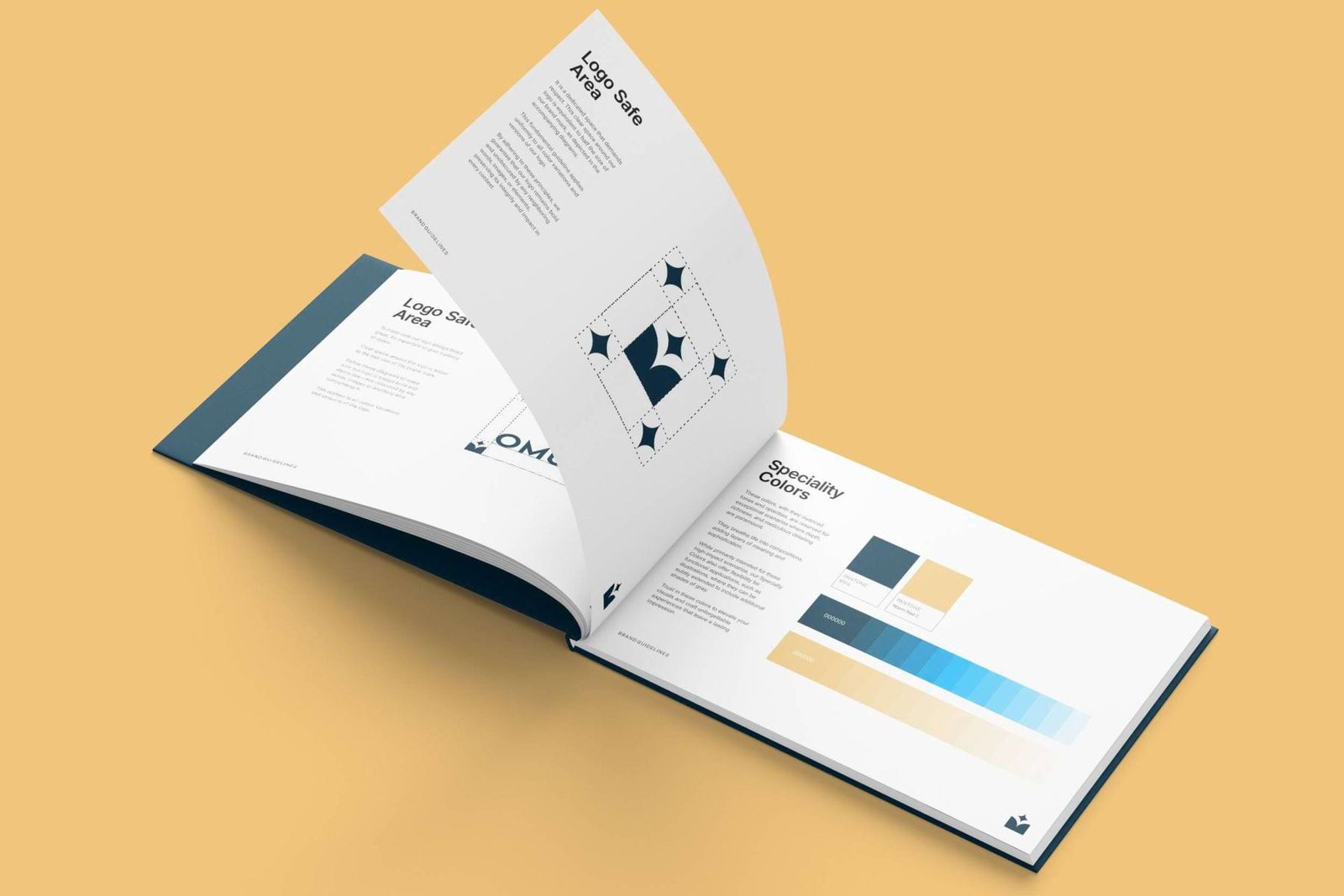Design
The Ultimate Universal Guide to Design Professional Logo
09.02.2025
By Shaikh Asif

Design
09.02.2025
By Shaikh Asif
In this guide, we'll take you through the step-by-step process of logo design helping you learn to create an iconic logo with best practices. Whether you aim to enhance your skills or gain an understanding of how professionals design logos, this guide is tailored for you. Your logo is often the first thing potential customers see. It's your chance to make a positive impression. A logo sets the tone for your brand. It communicates who you are and what you stand for.
A strong logo is easily recognizable, even at a glance. It builds trust and customer loyalty. I will now provide a brief yet comprehensive overview of our step-by-step logo design process, using a real-life case study—a detailed examination of a recent project where we created a logo and identity. This practical example will offer valuable insights and provide a tangible understanding of the logo design steps. Whether you're a designer seeking to enhance your approach or a business owner in search of a custom brand logo, this guide will help learn the principles and steps involved in creating a professional and timeless logo.
This is our 7-step logo design process with actionable tips, techniques, and best practices to help you in creating a professional and authentic logo that sets you apart from your competitors and makes your business stand out.
From identifying the business, then conducting comprehensive research, brainstorming for art direction and ideas generation, and so on.
Logo design is a diverse creative process that demands more than just design skills. It requires a deep understanding of a client's business, the creation of a comprehensive brand strategy, and the ability to translate that into a strong brand identity. Logo design is a journey that takes us through several phases, each playing a vital role in shaping the final logo. It's a process that unites artistry with strategic thinking and requires a designer to become a visual storyteller. In this article, we will delve into the world of logo design, exploring its phases, principles, and the art of crafting a visual identity that leaves a lasting impact. To understand the detailed steps of logo design it's essential to grasp the core principles of effective logo design as outlined by the celebrated designer Sagi Haviv. His three fundamental principles offer invaluable guidance on crafting exceptional logos.

At CGHNYC, every design concept undergoes a thorough evaluation based on three essential criteria, as emphasized by Haviv. These criteria are: is the design marked by simplicity? Does it leave a memorable impression? And, most crucially, is it aptly appropriate? These three factors form the cornerstone of their logo design assessment process.
Inspire from some of the iconic logos of the cghnyc.
![]()
Let me briefly introduce these three principles.
One of the fundamental principles of logo design, according to Haviv, is simplicity. A good logo should be simple and memorable. Complexity can make a logo difficult to recognize and diminish its impact.
For a logo to be effective, it must achieve balance and harmony in its design. Elements such as shapes, lines, and negative space should work together seamlessly to create a visually pleasing composition. An unbalanced logo can appear chaotic and detract from its impact.

A memorable logo can leave a lasting impression and help consumers recall the brand easily. Uniqueness is a key element in logo design. A logo should stand out from competitors and be easily distinguishable. It's essential to avoid clichés or generic design elements that might dilute the logo's distinctiveness. Haviv believes in creating logos with a timeless quality. Logos that don't rely heavily on current design trends are more likely to remain relevant and memorable for years or even decades. While it's essential to consider contemporary aesthetics, the logo should go beyond temporary trends.
Haviv stresses the importance of creating a logo that is relevant to the brand it represents. The logo should convey the core values, mission, and personality of the business. It should be a visual representation of the brand's identity. A successful logo should be versatile and adaptable. It must work well across various platforms, from digital media to physical signage. Haviv emphasizes that a logo should remain effective, whether it's placed on a tiny smartphone screen or a large billboard. Before diving into logo design process take a glance at our iconic work.
![]()
With those fundamental principles in mind, let's dive into the first phase of our logo design journey: the "Identify" phase
To design an effective logo, you must first understand the business it represents. This understanding goes beyond just knowing what the company does; it involves Understanding its history, culture, target audience, competitors, and long-term goals. Logo design isn't just about artistic expression; it shouldn't depend solely on personal tastes and preferences. While every designer may have a unique approach, most would agree that a well-structured brand strategy is a fundamental and crucial initial step.
A logo is not merely a visual symbol; it's a strategic asset that can directly impact a business's success. To create a logo that truly adds value, it's essential to stay objective throughout the design process. Here are some key considerations: The primary objective of a logo is to represent the brand effectively. It should encapsulate the core values, mission, and unique identity of the business.
Stay focused on creating a visual representation of what the brand stands for. A memorable logo helps in brand recognition. Objectively evaluate whether the logo design is distinctive enough to leave a lasting impression on the audience. A logo should communicate a clear message about the brand. Objectivity helps in evaluating whether the design effectively conveys this message or if it could lead to misconceptions.
A logo acts as the cornerstone of a brand's communication and is ever-present in all branding efforts. Thus, it should have a timeless quality. Instead of diving straight into design software like Illustrator, the initial steps involve briefing the client and establishing a solid foundation for the creative process. Designers can approach the identification phase in different ways. Some might use a simple creative brief questionnaire or have a discovery call. At Alitestar, we take a more comprehensive approach by using our brand strategy core framework.
Our process involves conducting a brand strategy session for our clients, during which we engage in a series of branding exercises. These exercises allow us to extract all the essential information required for the project, aligning it with our brand strategy core.
In the second step, we use the information and insights gathered during the identification phase. We delve into comprehensive research to gain a deeper understanding of both competitors and the target audience. This valuable knowledge will significantly inform our approach in the brainstorming phase. Research involves delving into the industry, understanding its nuances, and gaining insight into the environment where the logo will live.

Researching the industry helps designers understand the industry-specific challenges and preferences. This knowledge is crucial for creating a logo that aligns with industry standards. By researching the target audience, designers can tailor the logo to resonate with the people who will engage with the brand. This ensures the logo's effectiveness in conveying the intended message. Analyzing competitors provides valuable information on what works and what doesn't in the industry. you can use this insight to think about how to differentiate from its competitors.
It serves as a compass for the design process, making sure that the logo accurately represents the brand. During the strategy session, we conduct a competitive analysis or market audit and gain insights from navigating competitors’ websites and evaluating their brand identities. Then we take notes on what are their strong and weak points so that it can serve us in the next step—the brainstorming step.
During this brainstorming step, based on the insights gathered from the discovery and research phases, we begin outlining our plan for generating logo ideas. Brainstorming is a creative process used to generate a wide range of ideas, especially in logo design. During brainstorming, it's important to think broadly and without limitations. This means coming up with as many ideas as you can, even if they seem unconventional. You can do brainstorming by one yourself or you can do this with your team but ultimately the goal of brainstorming is to generate all the possible ideas and thoughts without any judgment.

Imagination and creativity are very helpful in the brainstorming phase to come up with unpredictable ideas and thoughts. We utilize brand personality exercises from our brand strategy framework to establish the visual aesthetics of the brand. For example, in the case of the Omulux brand identity, the personality traits or overall look and feel include being artistic, classic, luxurious, exclusive, and sophisticated. We document these style characteristics and refer to them when brainstorming logo ideas. We also use the mind map, which is the final step in our strategic framework, to initiate the search for visual representations of the most critical keywords that have been distilled from the earlier steps of the brand strategy core.
Finally, we construct a mood board or stylescape, a collection of visuals that reflect our strategic insights. This involves gathering inspiration for the visual elements, such as fonts, colors, styles, and imagery, that will represent our brand strategy. While numerous resources for inspiration are available, websites like Behance, Dribble, and Pinterest are commonly used to find creative inspiration.
Next, we engage in a discussion to explore potential solutions and make decisions about the direction in which we should proceed.
Sketching is crucial in the logo design process as it allows us to express creative ideas tangibly and immediately, bringing concepts to life. The goal of sketching is to unleash creativity, bridge conscious and unconscious thinking, and lead to the generation of diverse ideas. Most professional logo designers start by sketching logos using pencil or pen on paper, though some prefer working directly on the computer. We suggest sketching by hand because it adds a personal touch to the creative process. It fosters an intimate connection between the designer and the design, often reflecting a sense of craftsmanship and uniqueness.

It is also beneficial to share with clients or team members early in the design process. They can provide tangible feedback that guides the evolution of the logo. You need to think freely and let your creative imagination flow. When you sketch by hand, you can explore a wide range of concepts without getting bogged down in the details. And here quantity is more important rather than quality, so go for quantity and generate a multitude of ideas rather than striving for perfection. Quantity can lead to quality, as some of the less refined concepts may spark innovative solutions.
Given that sketching logos can be a time-consuming endeavor, it's essential to take breaks and allow your creative imagination to flow freely. Engaging in a physical task like exercising with a conscious mind can create a bridge between conscious and unconscious thought processes. It can lead to "aha" moments and fresh insights. In the end, we need to sketch tons of logo ideas because having a variety of strong concepts is crucial. This abundance of ideas allows us to select a promising and robust concept to move forward within the digital execution phase.
The design phase is where the magic happens in the logo creation process. Here, your concepts and sketches come to life as you transform ideas into visual representations that effectively communicate the brand. The main objective of the design phase is to create a visual identity that captures the essence, personality, and values of the brand. It's essential to establish clear criteria for evaluating what works and what doesn't for your client. These criteria might include factors like how well the design aligns with the brand's values, its versatility, and its memorability.

If you find that your initial concepts aren't meeting your expectations, don't be discouraged. The design process is iterative, meaning it involves cycles of revising and refining until you achieve exceptional ideas. It's perfectly normal to go back to sketching and rethink your concepts. This back-and-forth exploration is a natural part of creativity and often leads to stronger and more innovative designs. Design is where you decide what colors, fonts, shapes, and other visual elements to use. This is the phase where you experiment, fine-tune, and iterate. Design can be time-consuming, and it's not uncommon to spend a significant amount of time tweaking and refining your concepts.
It's a process of experimentation, testing, and refinement. The final design should be a perfect representation of the brand, creating a visual identity that resonates with the audience. If you approach this step methodically and avoid rushing, your logo concepts will rapidly improve and become much stronger. By giving this step the attention it deserves and avoiding hasty decisions, your logo concepts will significantly and swiftly improve, gaining strength and effectiveness.
Presenting the final logo design concepts to the client is a critical step in the logo design process. The purpose of this presentation is to effectively communicate your design ideas and concepts, ensuring that the client fully understands your creative vision. This presentation is a pivotal moment because it significantly influences the client's approval and decision-making process. The importance of a great presentation cannot be overstated. It's not just about displaying your work but also about telling a compelling visual story. An engaging presentation demonstrates your professionalism, attention to detail, and commitment to the project. When clients see a well-prepared presentation, they are more likely to view you as a credible and trustworthy designer.
Now, the number of logos to present to your client is a crucial decision. While it's true that some designers overwhelm clients by presenting too many concepts, the goal isn't about sheer quantity; it's about providing a focused, effective solution.

As working with a variety of industry projects we believe, that presenting a single well-crafted concept can be the best approach. This singular solution should be more than just visually pleasing—it should be a straightforward and clear solution to the client's needs. The key is to make this one concept unpredictable in a way that captures the essence of the brand and communicates its core message effectively. By following our best practices for presenting logos and brand identities, you'll create a presentation that makes your design the obvious and irresistible choice for your client. We recommend you keep the presentation clear and straightforward. Your client should easily grasp the core ideas behind the logo concept. Use a clear visual hierarchy to emphasize the key elements of each concept. Highlight the most important aspects, such as the logo mark, typography, and color choices. Provide a brief explanation of the design elements, the inspiration behind the concept, and how it aligns with the brand's values and goals. Incorporate mockups to demonstrate how the logo will look in the real world. This not only helps the client see the logo in context but also adds an extra layer of professionalism to your presentation.
Clients may initially be skeptical about new logo design concepts, but this is quite common as all fresh designs can feel unfamiliar at first. It's important to reassure your client that the logo will gain its true significance and identity once it's officially adopted and integrated into their brand.
Delivering the brand identity package is a crucial step in the logo design process. It involves providing the client with all the necessary assets to effectively implement their new logo and brand identity across various media and platforms. The goal of this step is to empower the client with all the tools and knowledge they need to effectively use their new brand identity and logo. This not only ensures a seamless implementation but also maintains a strong and consistent brand image across all touchpoints.

Offering a brand style guide is highly recommended, although its inclusion depends on the client's specific requirements and budget constraints. Both designers and clients or business owners must recognize the significant value of having a comprehensive brand style guide for consistency and coherence in brand representation. The brand style guide is a crucial component of any branding package. It is a comprehensive manual that outlines the rules and guidelines for using the logo and other brand elements consistently. This guide ensures that anyone working with the brand, whether they are the client's in-house team or external partners, understands how to maintain brand consistency. It covers various aspects such as logo usage, color palettes, typography, spacing, and more.

In general, it's essential to incorporate fundamental logo variations, which should encompass. Colored: The primary logo is in its full-color version. Black: A version of the logo in solid black for use in situations where color printing is limited or when a monochrome option is preferred. White: A version of the logo in solid white for use on dark backgrounds. Monochrome: A simplified version of the logo in a single color, often used in small or single-color applications. When delivering the brand identity package, follow these best practices:
1. Organize the files neatly and clearly label them.
2. Include a detailed brand style guide that provides usage instructions and examples.
3. Offer guidance on where and how to use different logo variations.
4. Ensure that the client has access to a designer or resource for any questions or support during the implementation phase.
5. Encourage the client to share the brand guidelines with their team and partners to maintain consistency.
Remarkable logos are not the result of chance; they are born from strategic thinking, experimentation, learning from failures, and persistent design efforts. Every element of your logo, from its shape to the choice of fonts and colors, can profoundly shape how people perceive your brand. In logo design, intentionality is key. You must approach each design decision with a strategic mindset. It's a blend of creativity and skill underpinned by a strong understanding of branding principles. Following a structured process ensures that your design decisions go beyond personal preferences and subjective opinions. This process empowers designers to defend their work confidently and business owners to select the ideal logo for their brand. Are you in search of a tailor-made brand logo for your business? Feel free to schedule a call with us to discuss your project. At Aitestar, we specialize in crafting strategic brand solutions that deliver exceptional results.


Shaikh Asif is an Award-winning designer, director, strategist, and educator. He’s the Lead Strategic Brand Designer and Art Director of The Alitestar— a strategic branding and design agency that helps startups, ambitious CEOs, and passionate entrepreneurs to achieve success and ultimately create unforgettable brand experiences.